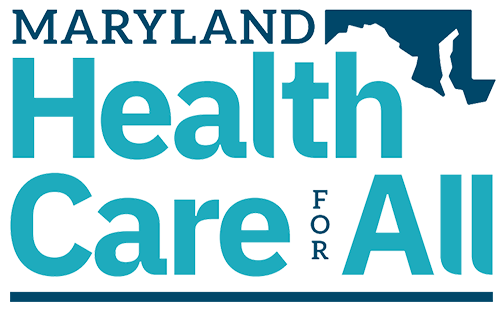The Daily Record
October 30, 2013
Bryan Sears
The head of a group that spearheaded a $1 increase in the state’s tobacco tax five years ago wants another increase to combat what he called stagnated smoking rates among adults and children.
Vincent DeMarco, president of Maryland Citizens Health Initiative, said the increase on cigarettes and a proposed tax increase of 95 percent of the whole sale price on non-cigarette tobacco products would go directly toward underfunded smoking prevention and cessation programs.
“It’s a fact that when you increase the cigarette tax you decrease smoking,” said DeMarco. “We know it works, and it helped expand health care to 100,000 Marylanders who wouldn’t otherwise have had it.”
DeMarco and other anti-smoking activists are expected to lay the groundwork for another cigarette tax increase Wednesday morning as they release a 15-page report. That report, DeMarco said, proves the success of a similar $1 per pack increase that took effect in 2008.
To DeMarco and others, the success of the 2008 increase isn’t solely about the decrease in Marylanders who smoke.
The 15-page report produced by the coalition of 10 organizations says that the 2008 tax increase resulted in 15,000 fewer high school smokers and 99,000 fewer adult smokers. The report says those reductions resulted in a savings of $2.4 billion in combined long-term health care costs.
DeMarco, a health care advocate who took the lead on a recent increase in the tax on alcohol, said he believes the decreases in the percentages of people who said they smoke as reported by the Centers for Disease Control is directly related to the 2008 tax increase.
“We know it’s a fact because it happened in Maryland just like it’s happened everywhere else the cigarette tax has been increased,” DeMarco said.
In 2007, 16.8 percent of Maryland teens said they smoked, according to a CDC survey. That percentage dropped to 11.9 percent in 2009, just one year after the tax on cigarettes increased.
The number of adult smokers in Maryland dropped from 17.1 percent in 2007 to 14.9 percent a year later.
But since then, the number of adults and teens smoking has increased slightly to 15.2 percent in 2009 for adults and 12.5 percent for teens. DeMarco said the rate of decrease is stagnant and another increase in the cigarette tax would drive down the number of smokers in the state as he believes it did five years ago.
The proposal to increase the cigarette tax is identical to a bill introduced last session in the General Assembly. The bill stalled in the House Ways and Means Committee over concerns about the tobacco tax imbalance between Maryland and Virginia and the increase in cross-border smuggling since 2008.
The General Assembly last session increased the fines for cigarette smuggling from up to $50 per carton to a mandatory $150 per carton for the first offense. Subsequent offenses carry a mandatory fine of $300 per carton. Convicted smugglers can also be sentenced to up to two years in jail.
From 2007 to 2011, there was an average of 15 first-time cigarette smugglers arrested in the state annually. In 2012, that number jumped to 88 arrests, which averaged 399 cartons of cigarettes each, according to figures provided to the General Assembly by the state comptroller’s office.
Legislative analysts in Maryland and representatives of the convenience store industry estimate the bill would severely impact small businesses.
The proposed tax increase would put Maryland at $3 per pack, the highest among Delaware, District of Columbia, Pennsylvania, Virginia and West Virginia. D.C. is currently the highest at $2.50. At 30 cents per pack, Virginia boasts the lowest current cigarette tax.
The proposed 95 percent of wholesale tax on other tobacco products would further cement Maryland’s position as the highest tax in the region.
Legislative analysts earlier this year estimated that the increase, if approved, would take in about $33.6 million in the fiscal year that begins on July 1. But that figure steadily drops over the next three years to $24.5 million. The Department of Legislative Services attributed the projected decreases to an expected “significant reduction in the taxable consumption” of cigarettes and non-cigarette tobacco products.
“With a typical convenience store, we know the demand for cigarettes is decreasing,” said Jeff Lenard, a spokesman for the Virginia-based National Association of Convenience Stores. “When you add taxes on top of that, then the decrease per store accelerates, but that doesn’t mean consumption decreases. It just goes elsewhere.”
There are 1,859 convenience stores in Maryland, and 1,047 of those are one-store operations, Lenard said.
More than 70 percent of all sales at convenience stores are made at the gas pump. But owners make 65 percent of their profits through inside-store sales, according to the association.
“While you want gas sales, the inside-the-store customer is more precious,” Lenard said. “You want the customer inside the store. If the cigarette customer goes elsewhere, then the guy looking to get a drink or a newspaper or a sandwich goes elsewhere.”
Lenard said the tax boost would also create an increase in black and gray market sales that are untaxed and unregulated.
DeMarco, the health care advocate, rejected the idea that the increase would hurt small businesses.
“We’ve increased the tax before, and we haven’t seen any evidence of serious impact to small businesses,” DeMarco said.
Last modified: October 30, 2013



